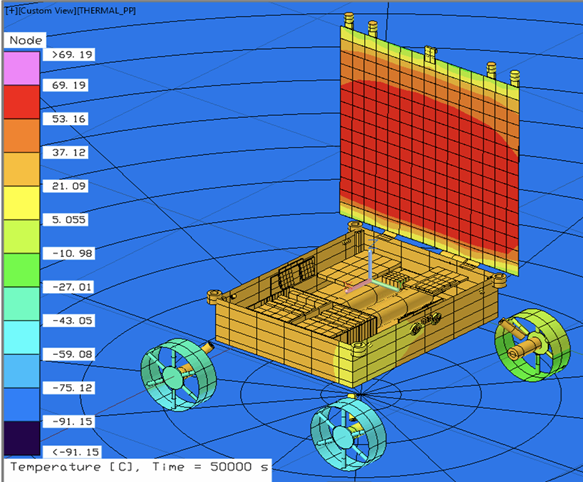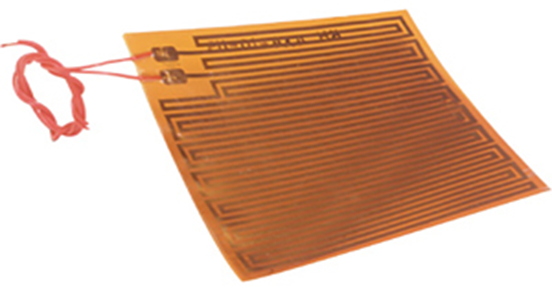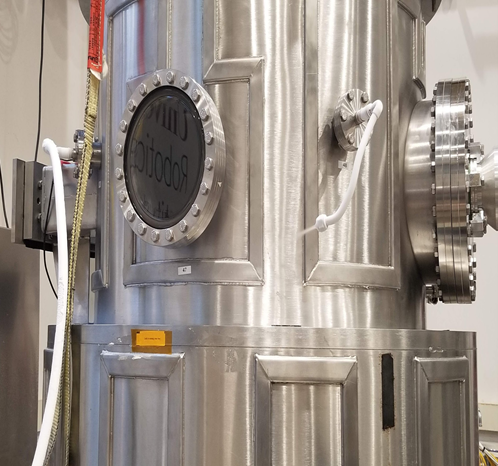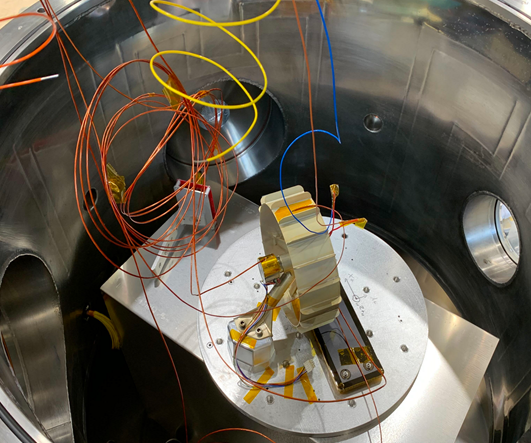On the south pole of the Moon, shadowed regions exhibit temperatures as cold as -210˚C and illuminated solar panels reach temperatures up to 70˚C. These extremes of cold and hot must be moderated from -10˚C to 35˚C internally to ensure functionality of batteries and electronics. The technology, design and process to achieve this essential thermal regulation is presented here. The Thermal system ensures that every thermally sensitive component remains within safe temperature limits through flight, in lunar orbit, and on the Moon. MoonRanger also requires design and selection of thermal control-related parts, such as films and finishes (i.e., Multi-Layer Insulation). Thermal Vacuum Tests inform simulations, and provide input for thermal control avionics. Thermal design involves collaboration with other specialties like mechanical, avionics, software and systems to generate cross-disciplinary thermal-related solutions. The lunar environment’s temperatures tie into many of the rover’s features, functions and actions.
Conditions on the lunar surface are extreme in terms of temperature, lighting, and vacuum. On Earth, sunlight is diffuse (i.e., light bounces in all directions, not just directly) and our atmosphere attenuates incoming sunlight. On the Moon, the sun’s angle above the horizon is about 4 degrees making light span out in an almost straight line. Shadows and darkness are more intense along with the sun’s rays. How does MoonRanger measure and detect these temperatures? How could a robot do that? It is in part because of special instruments, thermocouples and thermistors. These measure the temperatures of sensitive components like custom boards, sun sensors, cameras, computers, actuators, radiator, and solar panel.
Thermocouples are used on Earth for testing before the mission because they can measure temperatures reliably across a wider range of temperatures than the thermistors used for the space mission. Their dissimilar metal wires produce a varying voltage that is proportional to the temperature that they are experiencing. The thermistors used in the flight rover measure temperatures with less error than thermocouples for the temperatures MoonRanger will experience in space. While thermocouples use voltage to determine temperature, thermistors use resistance. A thermistor is a thermally sensitive resistor and its resistance changes with temperature. Just like how a thermometer can sense hot or cold, these sensors are the rover’s means of measuring temperature.
Below is a display of the predicted temperatures of each part of the rover. The surrounding blue represents the Moon’s surface temperature, which, in this case, is around -91℃. As one could suspect, the red portion of the rover is the solar panel that is experiencing direct sun. MoonRanger’s solar panel is deployed vertically to maximize power generation from polar sunlight that always impinges from low on the horizon. MoonRanger manages its internal temperature to a large degree by maneuvering to generate more or less power than it is using. This is analogous to a human body increasing or decreasing metabolism with greater or less activity to stay comfortable in cold conditions.

The rover will encounter dips in the terrain and large rocks that cast long shadows. The shadows block the sunshine that is the rover’s primary power and heat source. Despite shadowing sensitive components must remain warm and intact. Warming is accomplished by activating heaters that are appended to the sensitive components. The heaters are extremely thin, about a hundredth of an inch, but given their size, they are relatively powerful. They can produce up to 2 watts each to a total of more than 20W. They are connected to electronics that switch them on and off based on temperatures that the thermistors read. It is similar in logic to a thermostat in a room; it is self-corrective and will continue to adjust to reach a certain threshold.

Besides thermal design and analysis, it matters to test pre-flight thermal assemblies and subsystems in the most realistic conditions possible. A thermal vacuum chamber is utilized to simulate the vacuum, hot and cold that will be encountered in space. The vacuum precludes heat transfer by convection and air circulation as is common on Earth, leaving heating and cooling exclusively to radiation and conduction. The extreme cold is generated by enveloping a test article in liquid nitrogen shroud within the chamber. The heat from sunshine is generated by a xenon lamp. Each subsystem of the rover (e.g. wheel module) is tested within this vacuum chamber at the extremes of hot and cold temperatures expected for the given component when on the Moon. The results from these tests will inform simulations.
By: Kerry Mills


